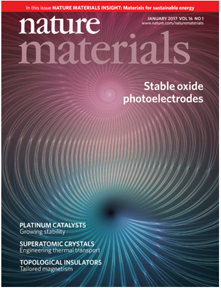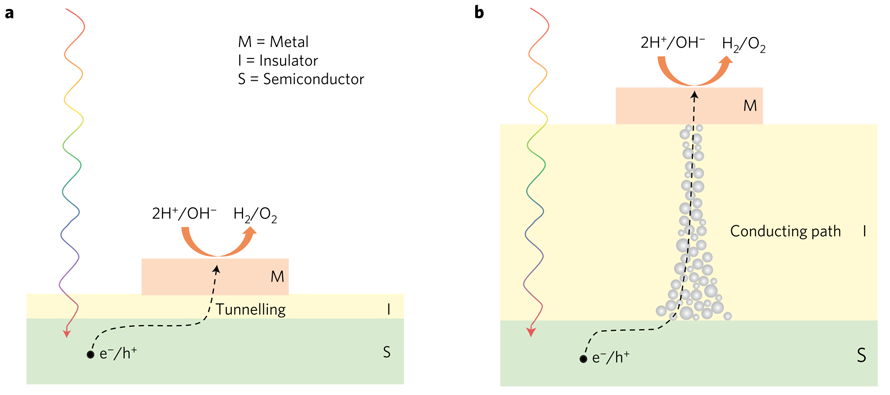Dr. Sam Hsu's research featured on the front cover of Nature Materials
 Dr. Sam H.Y. Hsu, Assistant Professor, has developed a general method for re-solving the trade-off between effciency and stability of metal–insulator–semiconductor photoelectrodes by employing dielectric breakdown for solar fuel application published on Nature Materials this year. This work has been featured on the front cover of the January 2017 Volume 16 No 1 issue of Nature Materials, http://www.nature.com/nmat/journal/v16/n1/covers/index.html. Dr. Sam collaborated with Researchers in Microelectronic Research Center, Department of Electrical and Computer Engineering, The University of Texas at Austin, launching the metal–insulator–semiconductor architecture utilizing the breakdown process. This idea solves the instability problem in silicon-based material without reducing the solar to energy conversion efficiency. Localized electrically conducting filament that was firstly created in metal–insulator–semiconductor photoelectrodes by Dr. Sam, allows photogenerated carriers in the semiconductor to flow easily to the metal catalyst layer.
Dr. Sam H.Y. Hsu, Assistant Professor, has developed a general method for re-solving the trade-off between effciency and stability of metal–insulator–semiconductor photoelectrodes by employing dielectric breakdown for solar fuel application published on Nature Materials this year. This work has been featured on the front cover of the January 2017 Volume 16 No 1 issue of Nature Materials, http://www.nature.com/nmat/journal/v16/n1/covers/index.html. Dr. Sam collaborated with Researchers in Microelectronic Research Center, Department of Electrical and Computer Engineering, The University of Texas at Austin, launching the metal–insulator–semiconductor architecture utilizing the breakdown process. This idea solves the instability problem in silicon-based material without reducing the solar to energy conversion efficiency. Localized electrically conducting filament that was firstly created in metal–insulator–semiconductor photoelectrodes by Dr. Sam, allows photogenerated carriers in the semiconductor to flow easily to the metal catalyst layer.
Based on previous study from other scientists, the construction method in the insulator layer results in low efficiency and unsatisfactory stability. According to the Dr. Sam’s discovery, the charge carrier could go through the insulated layer no matter how thick it is, therefore this finding provides an alternative pathway that allows unstable semiconductor to generate clean fuels effectively via solar water splitting. The study concluded the conducting filament acts as a ‘highway’ for electron to pass through the insulator layer and reach to the conducting layer, so that the silicon-based semiconductor has no direct contact with the electrolyte to avoid decomposition under the photoelectrogenerated redox reaction.
This promising idea could be applied generally to the solar-fuel device as the strong method for converting water to storable clean fuels, helping to reduce the use of fossil fuel and providing a blueprint for the related fields.
